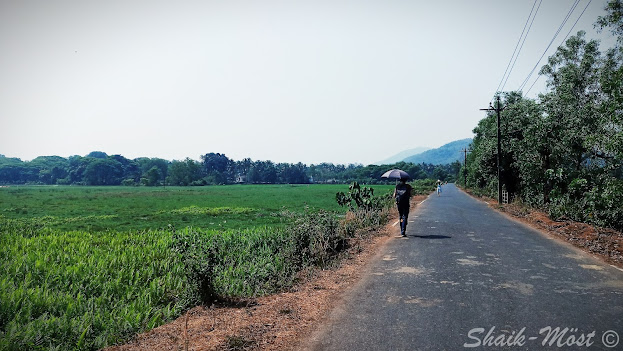A little bit about Goa. Goa is the smallest state of India by area, and it is
a South Western state with a total population of about 1.5 million. Goa was
not part of India when
India got its independence
from the
British empire
in 1947 after 90 years of their rule. Before that India was ruled by the
Mughal empire
for almost 200 years. However, predating these two empires,
Goa was a Portuguese Colony
for almost 450 years from 1510 until 1961. Portuguese invaded Goa and setup a
permanent settlement in this region in 1510. After India's independence in
1947, Portuguese refused to negotiate India's request to cede 'Estado da India Portuguesa' (State of Portuguese India) to the Indian government. In December 1961 Indian Army invaded this region
and
annexed Goa into the Indian Union. Goa was initially declared a Union Territory but in 1984 Goa became the
25th state of India. The residents of Goa who were born before 1961 and the
children of couples who married before 1961 are still eligible for
Portuguese residency and Portuguese citizenship/passport with some conditions.
Goans speak many languages, but
Konkani
is the official language of the state with the script written in
Devanagari (Hindi is also written in Devanagari).
Marathi language, which is also spoken in the neighbouring state of Maharashtra, is spoken by
many in Goa.
Hindi is
another language that many people speak here. Contrary to popular belief, Goa
is not a Christian majority state. According to 2011 census, 66% of Goans
identify themselves as Hindu, 25% as Christian, 8% as Muslim, and remaining
with Sikhism, Jainism, Buddhism, and others.
Our train arrived in
Margao town
a little after noon. The station was pretty empty. We took a taxi from the
railway station and came to the village where we booked our stay. Our stay was
in a village called
Cavorim Chandor,
which was about 11 kms from Margao. Our taxi driver informed us that the
Coronavirus situation has already affected tourism in Goa in the past few
weeks and there were very few tourists coming in and many foreigners were
already leaving the country. Also, he told us that the trains coming into Goa
were being cancelled from the next day onwards. So, it was a relief for us
that we arrived in Goa possibly by the last train before the trains on this
route were cancelled. We checked later online and all trains in this route
were cancelled two days after we arrived. Our taxi driver taught us a few
words in Konkani, the language spoken in Goa. Small sentences like how to say
"How are you?" and how to respond to that question.
Cavorim Chandor was a small village in South Goa with a population of little
over 2200 people with about 370 households. The village had a small community
hall, a Chapel, a school playground, and a small grocery store. The homes were
mostly built in Portuguese architecture. Goa being a costal region with
tropical weather, the entire village was filled with lush green trees and many
coconut trees. Our host welcomed us and showed us our stay. Our home was a 60
year old villa behind the home of our hosts. Both our home and our host's home
were in a large compound area surrounded by a lot of trees. We had an
independent home with a large balcony, a living room, a kitchen, bathroom, and
a bedroom. We also had access from our home to the backyard. We were excited
to stay at a new place for a month. The weather was slowly getting hotter as
the summer was just starting up with temperatures reaching up to 35ºC during
the afternoons and humidity reached up to 90%. Even though the temperature was
in mid to high 30s, it felt like it was in the 40s due to the humidity. We
already experienced this weather during our travels the previous year so we
were prepared for it. The market was about a kilometre away from our home
where we they sold fresh vegetables, grains, diary, meats, and fruits. There
was a small bus shed in front of our house and two buses ran from here to
Margao everyday.
Just as we arrived here, the world was dealing with Coronavirus and many
countries were shutting down their borders. We were unsure how our time here
would go and how our plans to travel to Europe and Mexico will be affected.
But at this time, all we could do was simply go with the flow and enjoy our
time here. Four days after we arrived here, Indian government announced a full
day of curfew where no one was allowed to go outside the house unless it's an
emergency. Before the one day curfew ended, it was announced that the entire
country will go under lockdown for three more weeks starting immediately.
There was panic everywhere, including in the village we were staying in with
no clarity on how it would affect our food supplies. As we just went to the
market the day before the lockdown, we were confident that before our supplies
end, we would get access to supplies again.
More about our stay during the lockdown in the upcoming blogs...

|
|
Kathi walking with Nina along the rice fields towards our home |

|
| Walking towards our Villa |

|
|
A view of our Villa |

|
|
Sam and Nora sitting on the steps in our backyard |

|
|
Rice fields near our home |
>> Read Next: Part 2: One year in Goa - Life during COVID-19 lockdown

Comments
Post a Comment